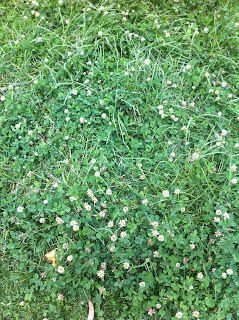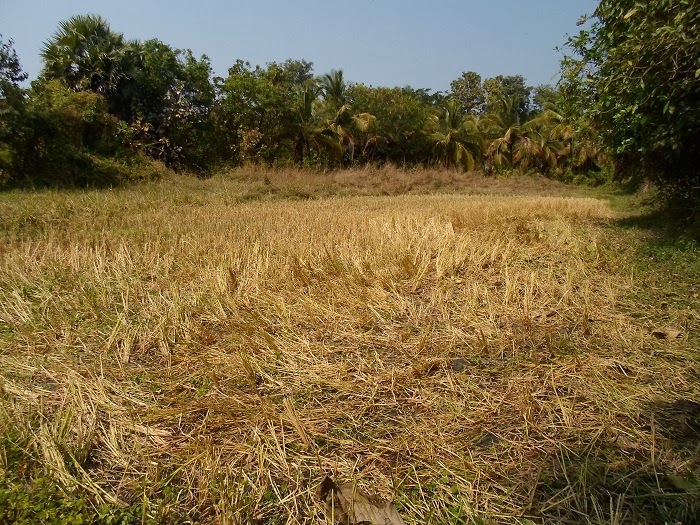Recently during visit to farm of Tony Thomas, he mentioned that growing trees in one area, improved the yield coconut trees in that area. I have heard similar observations while visiting Josephettan's farm in Trichur.
Here are some points from 'Natural Way of Farming' and 'The Agricultural Testament'. Both books suggest to plant trees so that fertility of the soil can be enriched.
Here are some points from 'The Natural Way of Farming' by Masanobu Fukuoka.
"Up to about 10 of Black Wattle trees shall be planted per quarter-acre among the fruit trees.
After five to six years of growth, Fukuoka felled these and buried the trunks and tops in trenches within the orchard.
Along with growing cover crops, Fukuoka started early on to dig trenches and fill them with organic matter to speed up the process of soil enrichment. He tried using a variety of organic materials such as straw, hay, twigs and small branches, ferns, wood and bark chips, and lumber. After comparing the results, he found that hay, straw and ferns were quite costly, while wood chips were not. The only problem was hauling this material in. The best material was lumber, which was relatively inexpensive, but this too was at times, difficult to carry in. Fukuoka first decided to produce lumber right there in his orchard. Figuring that the easiest and most beneficial way was to return to the orchard what had been grown there, Fukuoka tried planting various type of trees, and found black wattle to be the best for the purpose.
Five or six years after planting acacias, an area of more than 100 square yards of what had been hard, lean soil about each tree had become soft and porous"
Here are some selected points from Sir Albert Howard's 'The Agricultural Testament' in my own words.. for exact words, refer page 3 - INTRODUCTION.
"Even in soils where there is deficiency of phosphorous, trees have no difficulty in getting this. Potash, Phosphate and other minerals are collected from subsoil and used by green leaves. This gets deposited on the forest floor and becomes part of humus."
"The soil carries a large fertility reserve. This enormous reserve is realized when trees are cut down and virgin soil is used for agriculture. Plants like tea, coffee, rubber and bananas can be grown on recently cleared land, good crops can be raised without manure for ten years or more."
From page - 139 "The living roots comb upper 20 feet of soil for minerals phosphates and potash and used by green leaves. For example soil of north Bihar is low in available phosphates, but yield heavy crops without any additional minerals"
Here are some points from 'Natural Way of Farming' and 'The Agricultural Testament'. Both books suggest to plant trees so that fertility of the soil can be enriched.
Here are some points from 'The Natural Way of Farming' by Masanobu Fukuoka.
"Up to about 10 of Black Wattle trees shall be planted per quarter-acre among the fruit trees.
After five to six years of growth, Fukuoka felled these and buried the trunks and tops in trenches within the orchard.
Along with growing cover crops, Fukuoka started early on to dig trenches and fill them with organic matter to speed up the process of soil enrichment. He tried using a variety of organic materials such as straw, hay, twigs and small branches, ferns, wood and bark chips, and lumber. After comparing the results, he found that hay, straw and ferns were quite costly, while wood chips were not. The only problem was hauling this material in. The best material was lumber, which was relatively inexpensive, but this too was at times, difficult to carry in. Fukuoka first decided to produce lumber right there in his orchard. Figuring that the easiest and most beneficial way was to return to the orchard what had been grown there, Fukuoka tried planting various type of trees, and found black wattle to be the best for the purpose.
Five or six years after planting acacias, an area of more than 100 square yards of what had been hard, lean soil about each tree had become soft and porous"
Here are some selected points from Sir Albert Howard's 'The Agricultural Testament' in my own words.. for exact words, refer page 3 - INTRODUCTION.
"Even in soils where there is deficiency of phosphorous, trees have no difficulty in getting this. Potash, Phosphate and other minerals are collected from subsoil and used by green leaves. This gets deposited on the forest floor and becomes part of humus."
"The soil carries a large fertility reserve. This enormous reserve is realized when trees are cut down and virgin soil is used for agriculture. Plants like tea, coffee, rubber and bananas can be grown on recently cleared land, good crops can be raised without manure for ten years or more."
From page - 139 "The living roots comb upper 20 feet of soil for minerals phosphates and potash and used by green leaves. For example soil of north Bihar is low in available phosphates, but yield heavy crops without any additional minerals"





















































